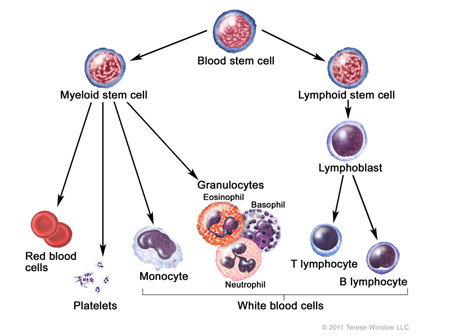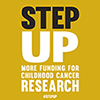Acute Lymphoblastic Leukemia (ALL)
Acute lymphoblastic leukemia (ALL) is a "liquid" tumor or cancer of the blood that starts in the bone marrow and spreads to the bloodstream (the term leukemia comes from Greek words for white and blood). ALL is the most common children’s cancer, accounting for 35% of all cancers in children. There are about 2,900 new cases of ALL diagnosed in children and adolescents (0-21 years old) in the United States each year.

Leukemia starts in the bone marrow, the spongy internal part of bones where new blood is made. Leukemia starts when a single, young, white blood cell called a "blast" develops a series of mistakes or mutations that allow it to multiply uncontrollably. Eventually, blasts take over the bone marrow and crowd out normal blood cells. One blast soon generates billions of other blasts, with a total of about a trillion (one million times one million) leukemia cells typically present in the body at the time of diagnosis.
Symptoms of ALL
Leukemia cells "crowd out" normal blood cells. It is the decrease in normal cells that produces many of the symptoms of ALL- Fatigue and being pale results from a decreased number of red blood cells, known as anemia
- Fever due to the disease itself or from infection because there are a decreased number of healthy white blood cells, known as neutropenia
- Bruising or bleeding from decreased platelets, known as thrombocytopenia
- Bone pain, sometimes associated with swelling of the joints
The signs and symptoms of ALL can be the same as more common children’s illnesses and many children are treated for those other illnesses before leukemia is diagnosed. Most children with ALL have symptoms for a few weeks to several months before a diagnosis of cancer is made. The time between when symptoms started and when the diagnosis is made does not change the chances for cure.
Last updated September, 2011
Newly Diagnosed with Acute Lymphoblastic Leukemia
In Treatment for Acute Lymphoblastic Leukemia
After Treatment for Acute Lymphoblastic Leukemia








